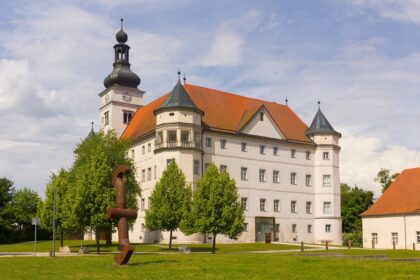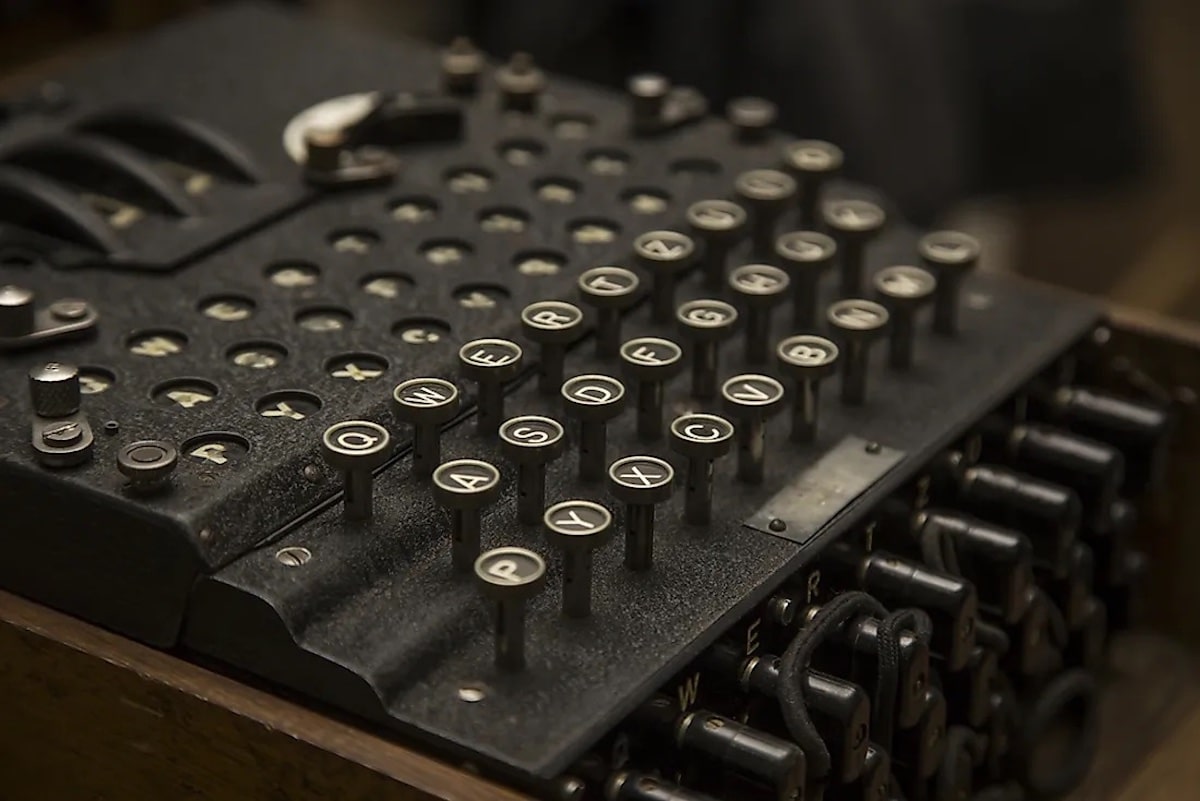During World War II, the British Air Force (RAF) and the German Air Force (Luftwaffe) fought it out in the Battle of Britain from July 1940 to May 1941. It followed the previous month’s disastrous Battle of France. When the German-Soviet Pact was signed, Hitler was no longer confined to the western front and could focus only on England. Winston Churchill’s England, not Chamberlain’s, was the one he chose to bring to its knees with an unparalleled bombardment, which showed the world the British were brave and made the Royal Air Force famous. The first major loss for the Nazis since the war’s outbreak in 1939 occurred as a result of these air battles.
Operation Sea Lion: Prelude to the Battle of Britain
It seems that Adolf Hitler directed Admiral Raeder in May 1939 to prepare a lengthy economic war to starve the United Kingdom via a maritime blockade, and that it was Raeder who came up with the idea of invading England. After the unexpectedly successful Sedan breakout (Battle of Sedan) in May 1940, Raeder, perhaps alarmed by the difficulties of a long war at sea against the British navy, proposed an invasion of England, capitalizing on the swift defeat of France to gain months in preparation for the programmed attack against the USSR. Hitler was seduced and gave orders accordingly.
It’s certain that the German staffs (particularly the German Navy and the German Army) had considered this possibility in 1939, but the job looked practically overwhelming due to its complexity. Whatever the situation may be, the RAF had to be annihilated before any consideration could be given to a hypothetical landing of troops. It’s possible that if the British air force was wiped out, an invasion wouldn’t even be required.
Admiral Raeder’s suggestion naturally led to the German Navy taking up the task once again. In contrast to an expensive economic war (not only in time), Hitler and the general staff took an interest in this idea at the end of June 1940. Combining an assault meant to smash the RAF with an offensive against the supply of England was a plan explored by Jodl and others. This would cause the British populace to capitulate, making the landing the last act of a fight already won in the air and on the sea.
The Kriegsmarine immediately voiced concerns, but that didn’t stop Jodl from putting out proposal after proposal, each one more brazen than the previous. He came up with the original name, Lion , which was eventually shortened to Sea Lion. Given that Raeder, the invasion’s conceptual originator, was uncharacteristically slow to act, it was only natural that the Luftwaffe, the Royal Air Force’s chief opponent, should take the initiative. Hitler became impatient and demanded that it be wrapped up by the middle of September.
Hitler urged and demanded that the Luftwaffe smash the RAF; this was to be Operation Eagle Attack, despite Raeder and numerous army commanders advising the Führer to delay the assault until the following year and to prefer an offensive in the Mediterranean. Even though the result of the air war was unknown and the value of a landing was still up for debate, preparations persisted until September 1940.
RAF vs. Luftwaffe: The air fleets involved
Before diving into the Battle of Britain itself, it’s worth reflecting on the materials used, which were perhaps as important as the overall strategy. After their stunning successes in Poland and France, where they easily conquered the opposing air force, the Luftwaffe was ecstatic. They used cutting-edge planes that blew away (nearly) every other option.
The Messerschmitt Bf 109 “Emil,” equipped with two 7.9 mm machine guns and two 20 mm cannons, was the primary Luftwaffe fighter during the Battle of Britain. It could go at 575 kilometers per hour and was very agile, but its range was short. Goering preferred the Messerschmitt Bf 110, the other fighter. It is equipped with a large arsenal (two 20-mm cannons, four 7.9-mm machine guns, and one 7.9-mm mobile machine gun), a long range, and decent accuracy, but poor maneuverability makes it a poor choice for engaging enemy ground troops.
It was hoped that the “Stuka,” a nickname for the Junkers Ju 87 bomber, would strike fear into the hearts of British forces with its 500 kg bomb, or four 50-mm bombs and one 250-mm bomb, much as it had in the hearts of French and Polish forces and the populace. The adaptability of the Junkers Ju 88, a standard German bomber in every respect, meant that it could be used in a number of roles, including that of a reconnaissance plane. Although the Dornier Do 17 is a veteran of the Spanish War, both the Do 17 and the Do 215 were of lower quality due to their inadequate bomb load capacities. While the Luftwaffe relies on the Heinkel He 111 as its primary bomber, this aircraft has a rather short range for a heavy bomber that is still classified as medium. It’s not even close to becoming a “flying fortress” capable of withstanding attacks from the opponent.
At the height of the Battle of Britain, the Royal Air Force relied on two types of aircraft and a third “weapon” that proved to be just as important. First, the RAF’s Hurricane was the service’s first and most widely used fighter, and it excelled at its primary mission of preventing bomber attacks. The M-109 was a formidable opponent, but the Spitfire, which would go on to become a hero of the battle (and the war), was faster, more agile, and better equipped. However, there were not a lot of Spitfires in the RAF at the start of the Battle of Britain.
Luftwaffe goes on the offensive
Since the hurried evacuation from Dunkirk, the RAF and the Luftwaffe have been at each other’s throats. The opening weeks of the war were comparatively peaceful in the British skies. Beginning in early June of 1940, the German air force launched an assault on England, with a total of about thirty bombers aiming targeting airfields. There was a break when the French onslaught ended, but activities resumed the day following the ceasefire, particularly at night.
Since England had refused to negotiate peace, and the French had fallen quickly, Hitler decided to hasten the preparations for Operation Sea Lion by destroying the Royal Air Force (RAF). The Luftwaffe began attacking English Channel convoys in the middle of July, testing the mettle of the already-overworked British fighter fleet. This was only the beginning of the massive air assault on England.
The Luftwaffe had around 3,000 operational planes at the start of August (including a little over 1,000 Me 109s and 300 Me 110s). Around 450 Hurricane and Spitfire planes were at the disposal of the British, but major gains were made, and by the middle of August, the RAF had more than 700 active fighters and just under 300 in reserve.
The British defence system
In the weeks after the evacuation of Dunkirk, British command had enough time to not only increase the number of fighter aircraft but also to arrange the defensive system. A reorganization of the air force led to a shift in where the fighter units would operate, and the radar system was also expanded. This new device was in its infancy and had not been tested extensively, but its significance was already recognized by RAF personnel. Air Marshal Sir Hugh Dowding had Coastal Command and Bomber Command to fall back on whenever he needed reinforcements due to persistent personnel shortages. However, the latter’s bombers (about 350 aircraft, mostly Blenheims) were meant to strike against German airfields and ports where the eventual invasion fleet would be based.
Finally, the lack of initiative was the RAF’s worst weakness throughout this Battle of Britain. The Luftwaffe clearly had the upper hand, while the British Air Force could only respond defensively. The radar helped make up for some of the British military’s shortcomings. England lucked out in that their defenses were well-developed and forced the Germans to launch an impromptu attack in response to Hitler’s impatient desire for the Otarie operation to succeed in September.
Despite his misgivings regarding Operation Sea Lion’s use in the event that the Luftwaffe was successful, Hitler eventually consented to try a big operation against England. This would include first a large air bombardment, and then an invasion. Thanks to its thousand pilots and its Hurricanes and Spitfires, England was prepared to reply to the German planes, but it also had a new “weapon,” the radar. The people living there were unaware that they, too, would have to pay a heavy price.
The Eagle’s Day
Beginning on August 10 and continuing for a few days afterwards, Goering plotted the destruction of the RAF, at least in the southern part of England. The British knew the air operations were set to start in the opening days of August. Stukas mostly attacked airfields and radar sites that the Germans had identified as targets. There was just one radar station damaged and the airfields were rapidly restored after the August 12 attack, which claimed 31 German and 22 British aircraft.
The English counties of Kent, the Thames Estuary, Hampshire, Dorset, and Wiltshire were all targeted in an assault on “Eagle Day” (Adlertag) on August 13. There were heavy attacks on three English airfields, but no fighters were present. That same night, a bombing raid damaged a Spitfire production plant near Birmingham. The Luftwaffe lost 45 planes in over a thousand missions, whereas the British lost just 13. The Germans considered “Eagle Day” a victory because they believed they had shot down 300 enemy aircraft, but in reality the number was closer to 100.
RAF wins the air battle
The Stuka remained at the forefront of the raiding parties in the coming days. However, the British fighters retaliated fiercely, and the German light bombers, notably the Me 110s, started to struggle against the superior speed and maneuverability of the British Hurricanes and Spitfires. The bombing operations seldom had desirable consequences.
On August 15, the Luftwaffe launched more than 500 bomber raids and 1270 fighter sorties, demonstrating an escalation in the intensity of German strikes. In comparison to the Royal Air Force’s loss of 34 planes, they suffered 75. They assaulted the airfields the next day, meeting with some success but ultimately incurring more casualties than the British.
Despite German predictions of roughly 300, Dowding still had 600 Spitfires and Hurricanes, and his fighters had downed more than 360 German aircraft, giving the RAF the first round victory. The Luftwaffe decided to switch tactics after a string of unsuccessful raids, including one on August 18. The inclement weather had kept the conflict at bay. After being harassed by Spitfires, it stopped using the Stuka and instead focused on capturing inland targets.
The Blitz on London
Even though the British side had more success in terms of raw numbers, morale among Dowding’s team was low. Both the manufacturing of aircraft and the training of British pilots were not enough to make up for the losses. Even if the Luftwaffe continues to lose more men at this pace, the Allies may still lose the war.
The British were unaware that their enemies were likewise pressed for time due to their goal of launching Sea Lion by the middle of September. As a result, a heavy blow was required to make the foe yield. The first change was a greater emphasis on escorting the aircraft. Then the targets shifted; airfields and facilities producing fighters became prime targets. The RAF’s situation quickly deteriorated at the start of September as it was forced to contend with an increasing number of bombers accompanied by a growing number of Me 109s. Over 380 German planes and 280 British fighters had already been destroyed by the time September 5 rolled around. As time went on, the wear and strain on the British fighters became more alarming. The Germans decided to switch targets and launch an assault on London at this time.
Both the disorganization of the Royal Air Force and the strike on the center of the British government were goals of the Luftwaffe. In addition, the Reich hoped to exact revenge for a British attack on Berlin that had been initiated because of a German bombing mistake over London. Despite Goering’s claims that the city was unreachable, the Luftwaffe persisted in their attacks, and Berlin was eventually destroyed.
A total of 300 bombers, accompanied by 600 fighters, set fire to London on September 7, 1940. Londoners gave this assault the name “the Blitz” after the devastating Blitzkrieg their French friends experienced. They believed the landing and last blow were imminent on the German side. However, British forces were worried that an invasion was imminent, so they ramped up their assaults on German ports.
Time is against the Luftwaffe
Despite some adverse weather and the brave response of the British fighters, the bombing of London continued during the next few days (and nights). However, time was of the essence for the British, since the Sea Lion operation needed to be started 10 days after the effective defeat of the RAF, and this was not yet definite despite the casualties. Hitler hoped to launch the invasion around the middle of September, so he gave the Luftwaffe another postponement. The severe weather on September 12 and 13 prevented the Luftwaffe from launching any further large attacks. The date of September 27 was chosen for the landing since it was the final day of favorable tide for many weeks. At the same time, the bombing of German barges by Bomber Command was having an increasing amount of success…
Using the radars, which identified the German waves from a distance and allowed for better coordination of the reaction, the British fighter squadron considerably limited a fresh raid attempt on London on September 15. Without much success, the attacks spread to other English cities, including Liverpool, Manchester, Bristol, etc. It was the worst day of the Battle of Britain for the Germans and another defeat for Goering’s Luftwaffe.
Battle of Britain: Turning point of the war
The Luftwaffe will not be able to destroy the RAF in the allowed time. As long as the RAF was operational, it was impossible to invade England. As a result, Hitler postponed Operation Sea Lion on September 17. Barely a month later, on 12 October 1940, he postponed it until the spring of 1941. Meanwhile, other concerns began to consume him.
The Battle of Britain did not finish with the Führer’s directive, however. Air Marshal Goering, infuriated, kept up the attacks on London for the next several weeks. But despite the suffering of the inhabitants, the German air attacks were kept to a minimum by the legendary English weather, supported by the RAF on good days. More than 400 Luftwaffe planes were destroyed between September 7 and September 30, 1940, but just 242 British planes were destroyed during the same time period. Goering’s ambitions and the invasion of Great Britain as a whole were dashed by Hitler’s decision on October 12.
Its people displayed a persistence and bravery that would become legendary; its pilots displayed skill and heroism, aided by a Spitfire that was hailed one of the greatest fighters of the combat; and the radar became an indispensable tool of the war thanks to the latter’s decisive win.
England, however, took a heavy hit; many of its seasoned pilots were killed, but the Germans’ fury was focused mostly on innocent people. Most of the main British city cores sustained heavy damage in the month of September. Bombings of civilian areas, as opposed to just industrial sectors, increased during the month of November. One such attack, on November 14, led to the martyrdom of Coventry. The deaths of forty thousand British citizens due to these attacks caused widespread mourning until May of 1941.
The start of the Eastern Front in the spring of 1941 and the subsequent Soviet resistance brought an end to the Battle of Britain and the Blitz. Fewer than a thousand RAF pilots engaged in the Battle of Britain, with 400 losing their lives. This defeat came long before El Alamein or Stalingrad. If Operation Sea Lion had been successful in September 1940, as Hitler had hoped, the Reich could have thrown all of its troops into the struggle in the East, then it is safe to infer that the result of World War II would have been quite different.
Bibliography:
- Churchill, Winston S (1949), The Second World War – Their Finest Hour (Volume 2), London: Cassell
- Churchill, Winston S. The Second World War – The Grand Alliance (Volume 3). Bantam Books, 1962.
- Stacey, C P (1955). The Canadian Army 1939–1945 An Official Historical Summary. Ottawa: Queen’s Printer.
- Dönitz, Karl. Ten years and Twenty Days. New York: Da Capo Press, First Edition, 1997. ISBN 0-306-80764-5.
- Wagner, Ray; Nowarra, Heinz (1971). German Combat Planes: A Comprehensive Survey and History of the Development of German Military Aircraft from 1914 to 194. New York: Doubleday & Company.
- Hooton, E.R. (2007). Luftwaffe at War: Blitzkrieg in the West, Vol. 2. London: Chevron/Ian Allan. ISBN 978-1-85780-272-6..
- Collier, Richard. Eagle Day: The Battle of Britain, 6 August – 15 September 1940. London: Pan Books, 1968.
- Bungay, Stephen (2000). The Most Dangerous Enemy : A History of the Battle of Britain. London: Aurum Press. ISBN 978-1-85410-721-3. (hardcover), 2002, ISBN 1-85410-801-8 (paperback).






